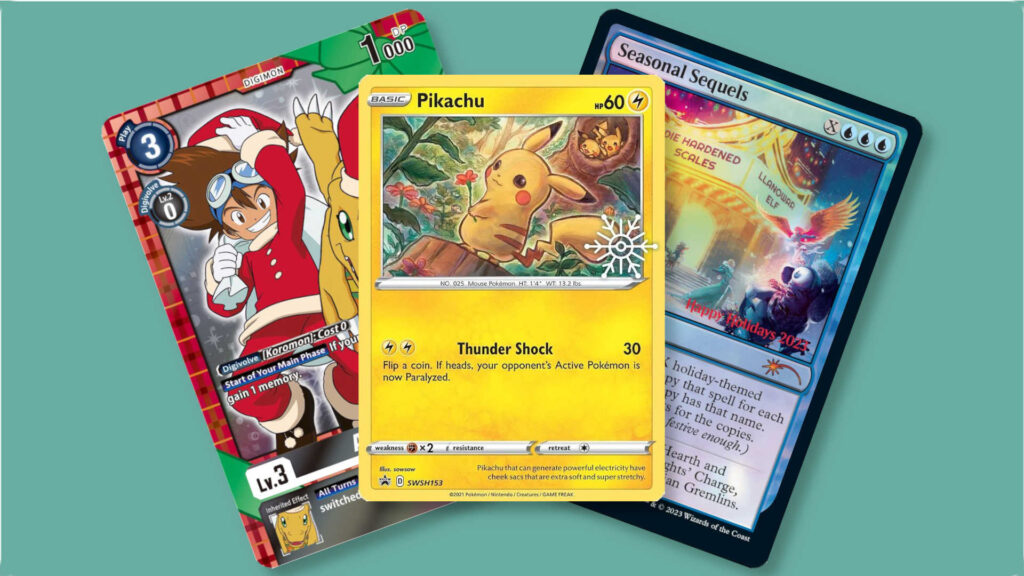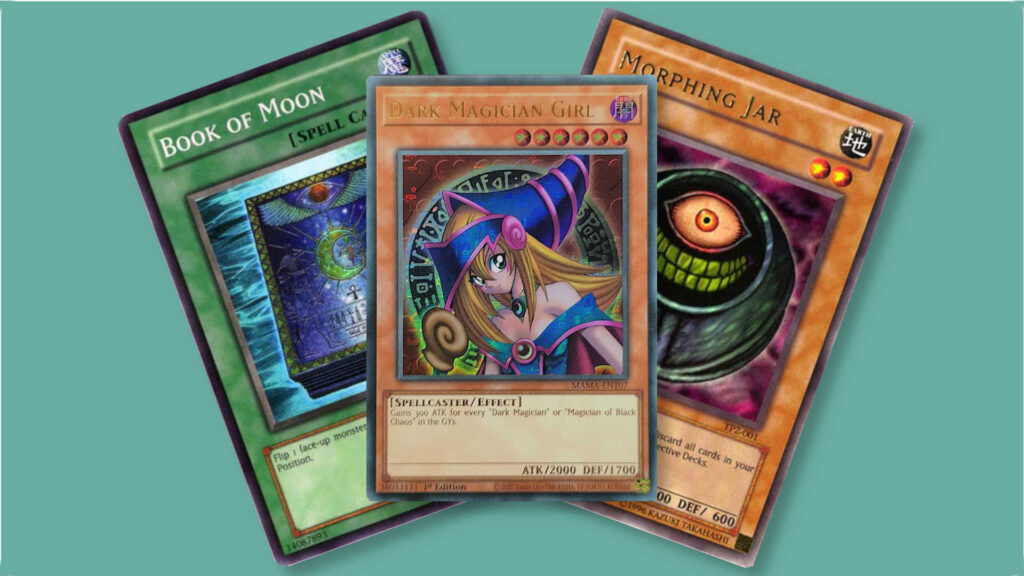The Altered Trading Card Game (or TCG) was crowdfunded via a hugely successful Kickstarter campaign in early 2024. Having launched the campaign with a goal of just over $50,000, Altered went on to raise an astonishing amount by the time the campaign ended: over $6.5m. It was clear that Altered had captured the imaginations of card game fans looking for a unique experience. In fact, the amount raised placed it as the highest funded TCG on Kickstarter to date. Now that it’s arrived in stores, has Altered delivered on its promise of welcoming, straightforward mechanics, inclusive aesthetics, and a focus on exploration rather than combat? Let’s find out!
Table of Contents
ToggleGetting Started With Altered

The first experience many players will have with Altered will come in the form of the game’s Starter Decks, of which there are six currently available, one for each of the game’s factions. First impressions are fantastic, with a bright, bold design and some genuinely gorgeous artwork on each box. Each deck’s Hero is shown alongside their Companion, and this goes beyond an aesthetic choice; in fact, the overall goal of the game is to reunite with your Companion, thus fulfilling the promise of the box art.
Those first impressions aren’t misleading either, because the Starter Decks are really solid introductions to the game. Inside you’ll find the Hero card matching the name of their deck, along with matching their corresponding faction, a 39-card deck (comprised of 31 common and eight rare cards), six token cards (with a different card back to the rest of the deck), Adventure cards, a paper playmat, player aid cards, and various other cardboard accessories and extras, including (of course!) a rule guide, which handily folds out on two sides, to ensure that you can quickly pinpoint the section you need at a glance.
The rules are easy to digest, but to assist players just starting out, the player aid cards are invaluable as a summary and reminder of the game’s phases and the ability icons it uses. The first thing players are likely to notice when checking out their deck, however, is the New Player card, which features a character from the deck’s faction and a QR code which directs you to the Altered TCG’s web page, and then to its accompanying mobile app (more on this later).
How to Play Altered
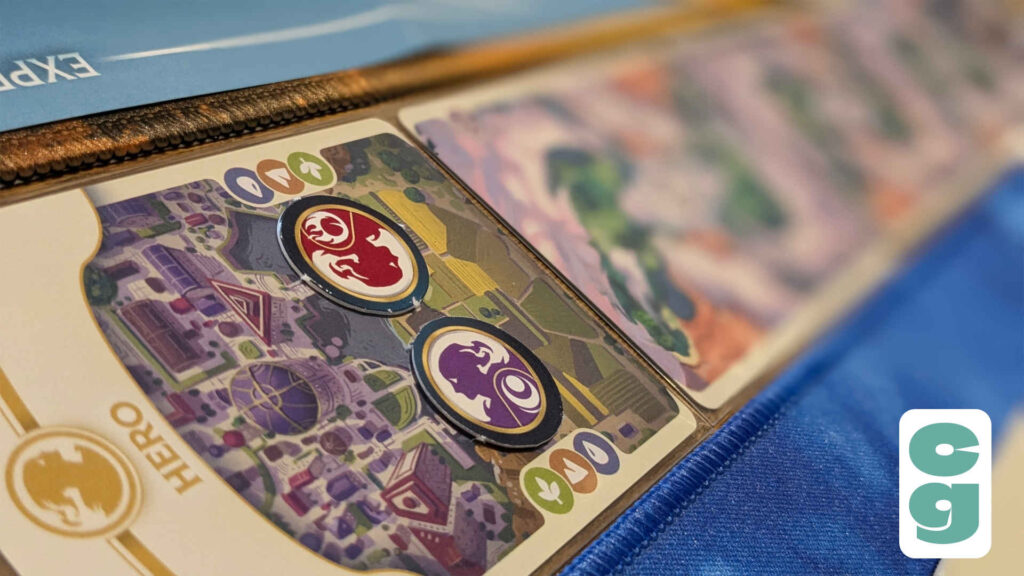
The aforementioned goal of Altered is for your Hero to meet their Companion after each character sets out on an expedition, at opposite ends of the game’s map. The map is created from the five Adventure cards found in the deck; only one set of these cards is needed per two-player game. The map is pieced together with the Hero’s starting place on one side of the play area, and the Companion starting on a card on the other side of the play area. In between these two cards are three more Adventure cards, placed face down to become Tumult cards, randomly shuffled.
When a Hero or Companion would move to a Tumult card, it’s turned face up and the corresponding token placed on the first space on the card. When the Hero and Companion meet, their owning player wins.
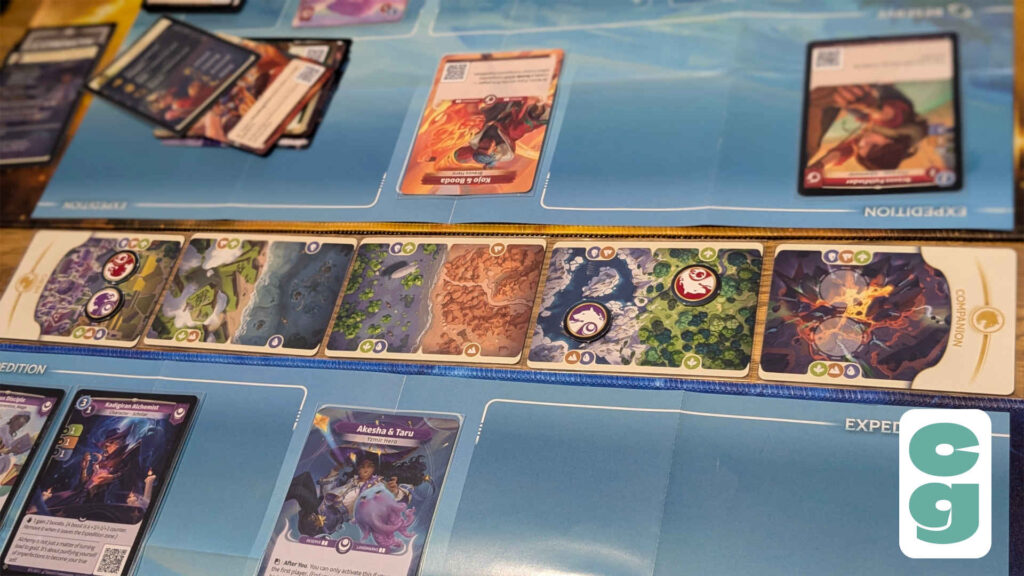
The game’s general order of play sees your Hero and Companion working through days on their expeditions; each turn begins with Morning, during which the active first player marker rotates to the next player, cards are readied from the exhausted (that’s turned sideways; of course, a familiar mechanic for most TCG players) and each player draws two cards, then can choose one of their cards to be placed face down in their Mana area. Mana pays for cards to come into play, and the mechanic of being able to use any card from your hand as Mana in this way recalls similar solutions in games such as Disney Lorcana and Star Wars Unlimited; it’s a very effective, proven method of ensuring that you don’t have to wait on drawn cards to have resources to play others.
The second phase is Noon, and this simply requires that any “At Noon” card effects are carried out. The real crux of the game is found in Phase 3, Afternoon, where players go back and forth playing cards (or using Quick Actions on their cards, prior to playing a card), generally to their Hero or Companion Expedition areas. Landmark cards are played into their own zone and the effects remain in place, unless the Landmark card is removed for any reason, and Spell cards are essentially events that are played, the effects carried out, and then they’re immediately discarded.
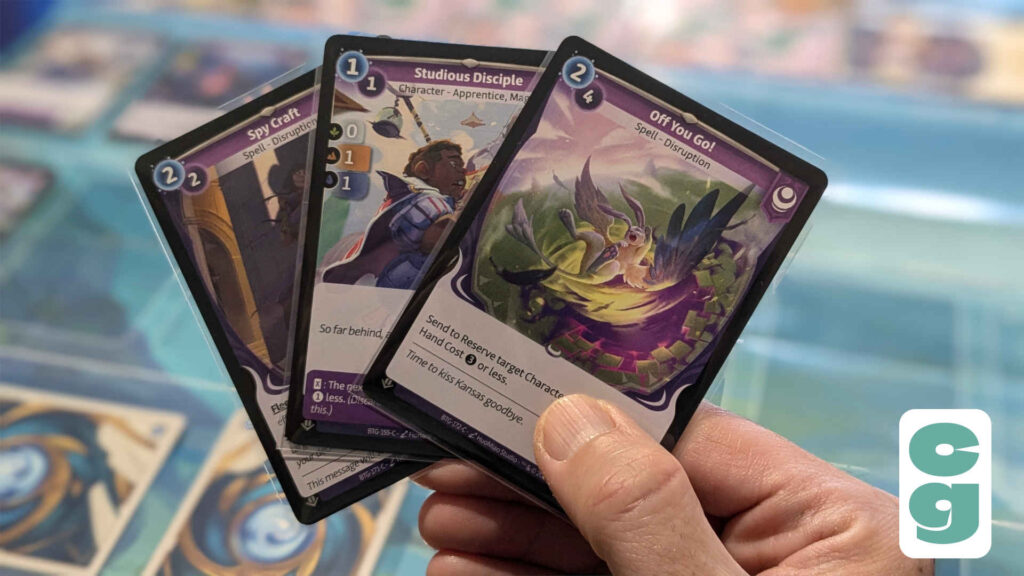
Players play one card (the Mana cost for each card is in the top left corner, with the cost for playing from the Reserve area below that), then the next player plays a card, and this continues until a player passes; the remaining player can continue playing cards until they either have no more to play, no more Mana to pay for new cards, or simply wish to pass themselves. Then it’s on to the next phase.
At Dusk, in Phase 4, players compare the total number of stats each character has in each region. For example, players will count up all of the Forest, Mountain, and Water stats in total for characters in their Hero’s Expedition region, then do the same for characters in their Companion’s region. The aim is to have a higher total stat in at least one area than your opponent; if you do, and that area is shown in your current space on the Adventure card your token is on, you can move ahead one space. As this is done for each region, it’s possible for the Hero and Companion to each move one space towards each other in a single Dusk phase.
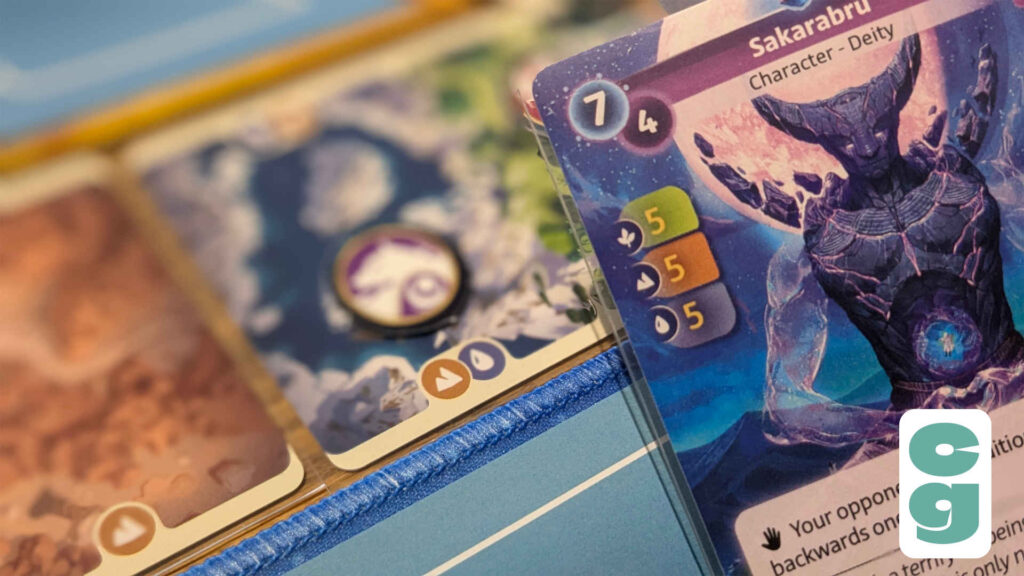
It’s also possible for both players to move ahead a space in the same region; for example, if a region has both Forest and Mountain, and one player has a higher Forest stat, but the other player has a higher Mountain stat, both will move forwards. It’s a really simple, easy to understand, and elegant system that avoids combat altogether, which is the focus of most TCGs. That’s not to say that there aren’t cards which can, in effect, “attack” another player’s characters, such as Spell cards, but in general, Altered does, quite deliberately, feel like a less aggressive game than its contemporaries.
Finally, after Dusk is Phase 5 – Night – and here any Characters in each player’s Expedition area are sent to the Reserve, with players able to keep up to two cards in their Reserve area, discarding any excess cards of their choice (and two Landmarks, though not all Starter decks have Landmarks, it’s worth bearing this in mind). During the Dusk phase, players can play cards from their Reserve area, usually for a different cost and often with different abilities than they had when played from hand.
This is a great mechanic that gives cards a double use; however, when played from Reserve, the card gains a Fleeting token. At Night, any cards classed as Fleeting are discarded, not sent to Reserve, so unless it’s enabled by card abilities, players can’t simply keep cards in play on an infinite loop!
The Setting and Characters of Altered
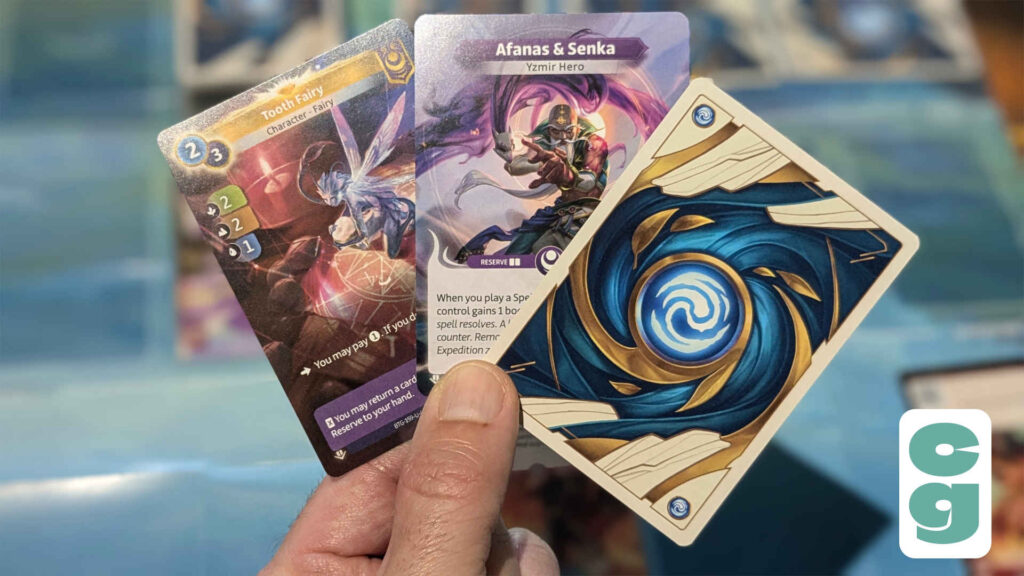
It’s worth pointing out that Altered drew as much attention and support as it did at Kickstarter without any media license; games in, or outside of, Kickstarter campaigns tend to only attract that much publicity and, frankly, money, if they’re attached to an established franchise. For example, one only need look at Disney Lorcana or Star Wars Unlimited, both new TCGs that have taken the sector by storm in the short time they’ve been available, for evidence of this. Of course, there’s the other side of the coin, in the form of countless non-entertainment licensed TCGs that have launched and failed to find an audience over the years.
Gameplay aside, Altered’s initial success is owed, at least in part, to its beautifully realized setting and characters. The world of Asgartha, made up of historical figures and events, as well as characters and settings from stories and dreams, is intoxicatingly beautiful, and vividly realized in its overall aesthetic. The game’s lore, which sees characters exploring the altered world for the first time (hence the game’s name), may be incidental, as is the case with most TCGs, but the cards bring the fantastical story to life with a sense of wonder, as well as an enchanting, diverse and inclusive cast that should captivate just about any player, regardless of age or experience level.
Is Altered Fun to Play?
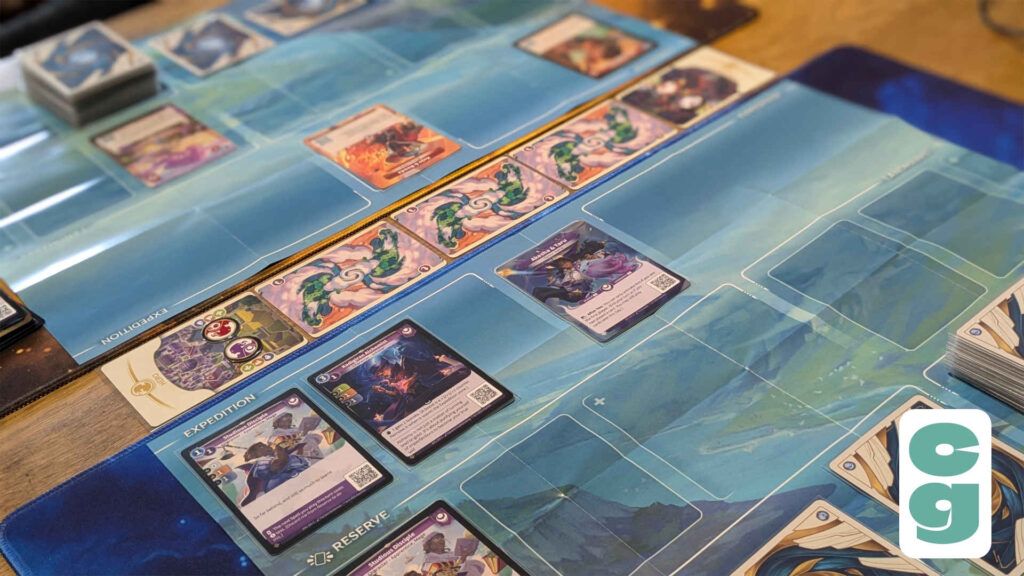
Of course, that gorgeous aesthetic and straightforward gameplay won’t mean a great deal if the game itself isn’t actually enjoyable in practice. Thankfully, that’s not the case; Altered, despite what can seem like a lot of phases to get your head around at first, really is a straightforward and fast-paced game, which gives players plenty of choices on each turn, as well as some unique mechanics that help it to feel fresh as a Trading Card Game experience.
The lack of direct conflict and combat is such a refreshing change from the norm; even Disney Lorcana, despite terminology that sees characters being “Challenged,” essentially has its own combat system, but the overcoming of terrain to progress on your expedition is a nicely thematic change in Altered, and one which is well supported by its mechanics.
Collecting Cards and Building a Deck in Altered
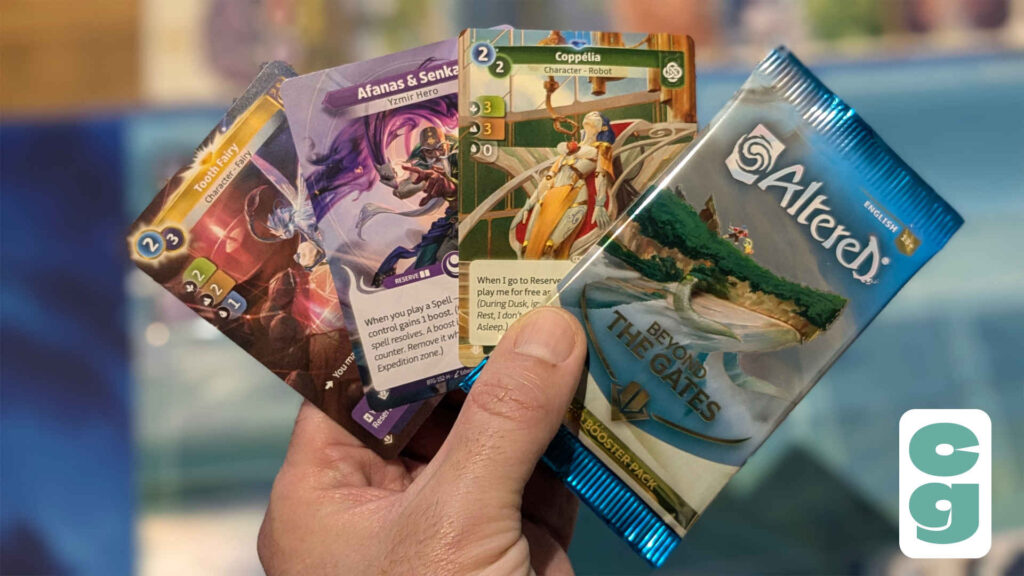
We recommend trying a few Starter Decks if you can, as each of the game’s factions, particularly in the construction of each Starter, can play quite differently. Find one, or more, that suits your style of play and you can continually refine it with building new decks. One of the biggest selling points of Altered is that every single playable card has a unique QR code, which you scan using the app and add to your own, personal collection. The card is locked to you, and at some point in the near future, publishers Equinox will launch a worldwide marketplace to buy and sell cards, as well as a print-on-demand service so that players can simply purchase the cards they need or want. This has the potential to genuinely revolutionize TCGs, which of course rely on the random purchase model at the primary point of sale (fixed Starters aside), and on players being invested enough to buy single cards from secondary sources, such as eBay.
Of course, this can prove particularly pricy, and for players who can’t afford to keep up, it can also often mean that more affluent players are able to buy their way to victory. Altered‘s proposed print-on-demand service should really shake this up, and hopefully lead to more inventive, unusual decks being built.
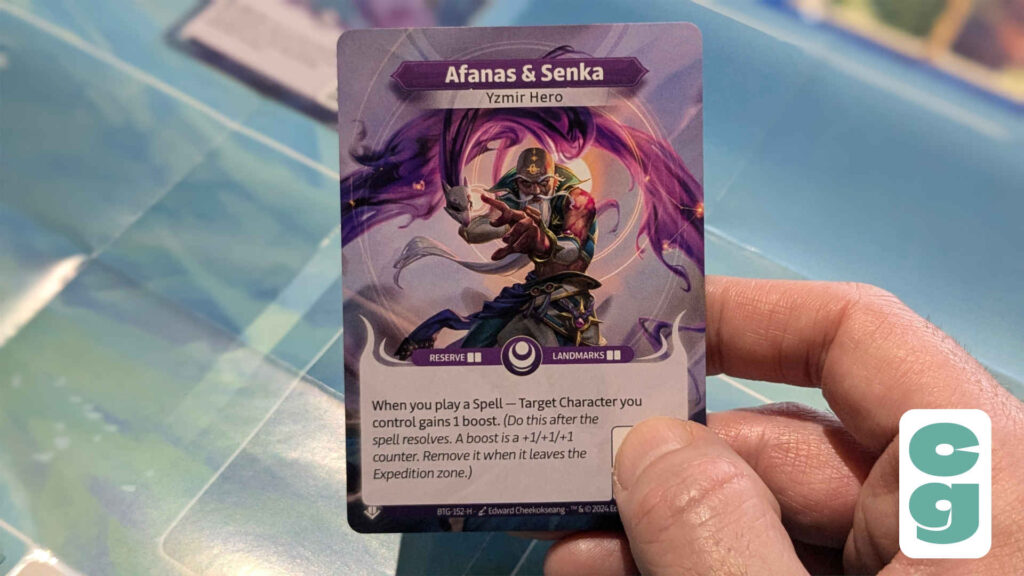
On that note, deck building in Altered is very straightforward; you pick a Hero, and your deck of cards (39 cards minimum, not including your Hero) must match your Hero’s faction. No more than three cards with the same name are allowed (at different rarities, some cards have different stats or abilities, but if they have the same name, regardless of stats or rarity, no more than three of that specific card are permitted in a deck). In another way that Altered is likely to be less reliant on players buying up scarcer cards to win, there must be no more than 15 rare cards, and no more than three unique cards in a deck.
One thing I must point out is that opening booster packs for Altered is a real hit and miss experience, particularly if you’re looking to build your deck and base your strategy around one specific faction. As only one faction’s cards are allowed per deck, you won’t get many cards per 12-card booster pack for your specific faction. This can really make booster packs a lot less fun than for other games; having opened several packs, I was personally dismayed to only find one card per pack for the faction I’d committed to, and it was seriously deflating.
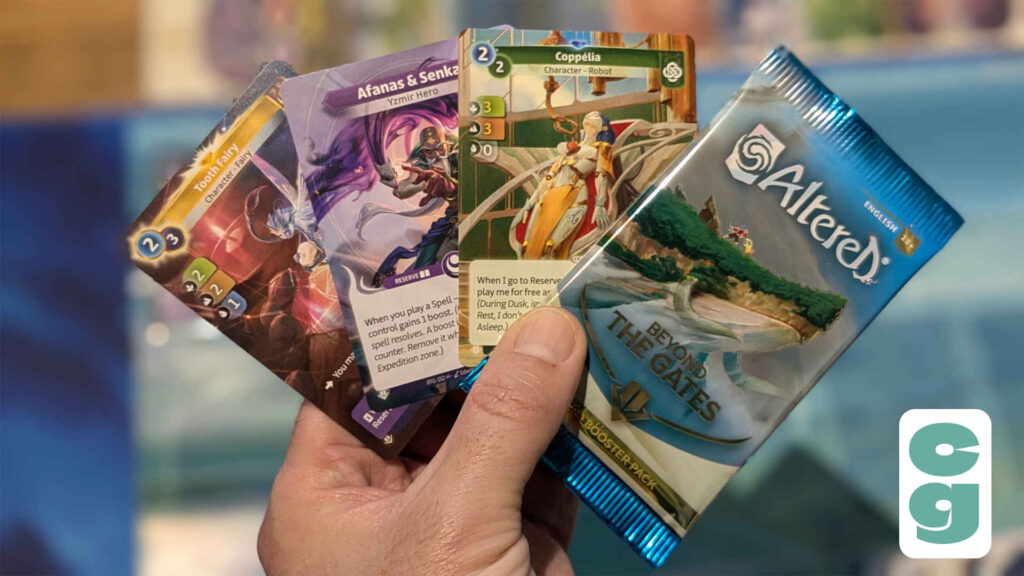
Though the cards really are beautiful, and the characters often surprising and diverse (I’ve happened upon Amelia Earhart, Joan of Arc, The Wizard of Oz’s Dorothy Gale, and the Frog Prince, as just three examples), along with the fact that higher rarity cards tend to mean extended and full art cards that genuinely look as if they’ve been plucked from a lavishly illustrated storybook, the lack of familiarity with the game’s world and the mishmash of characters makes it less immediately appealing than, say, opening a Star Wars Unlimited booster pack, as a fan of that universe.
However, once the marketplace and print-on-demand services are up and running, this should prove to be a non-issue; particularly if you find yourself with a highly sought after rare card that isn’t one you intend to use. It’ll be a card that can go straight to the marketplace, and you can, should all go to plan, find the cards you need there too, or just get them printed on demand!
The app (downloadable on Google Play or Apple) is currently a great resource for keeping players engaged with the game, and features regular deep dives into lore and even short stories to ensure that players become more involved in Altered’s enchanting world. There are also further tutorials and more comprehensive rules for players to look up, along with a store and event locator so that players can both acquire more cards and find other players to compete against.
The Card Gamer Verdict
Altered, with its unique lack of combat, focus on exploration, and few aggressive elements, is a TCG that feels even more of a breath of fresh air than some of the more recent additions to the genre. It’s a beautiful game aesthetically, and its Starter Decks are perfect, accessible introductions to its whimsical world. Booster packs feel a little underwhelming right now, but this aspect is likely to improve dramatically when the game’s new services launch. Altered is a fantastic game for players of all ages and experience levels, with a great deal of charm and compelling, easy-to-learn gameplay.
While you’re here, why not check out our reviews of other card games that are suitable for all ages, such as the brilliant Achroma, or Star Wars Unlimited?



